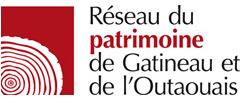A Healthy Urban Development thru Preservation, Application & Prescription
Comrades,
In this battle against a universal virus and ignorance,
I wish us all altruism, honesty and peace of mind.
Levels of Health Integration in City & Urban Planning
The experience of the cities in Conceptus led to identify three distinct levels of integration of health in the planning phase.
These levels provide a simple classification of healthy development based on Maslow’s Pyramid.
The first level is basic. It is recognition of the essential life support role of settlements: provision of shelter, access to food and clean water, fresh air and effective sewage treatment. It was the realisation that the industrial cities of the 19th century were inimical to health that led directly to modern planning. In Western Europe/North-America, we mostly take this primary level of planning/health dependency so much for granted that it is almost subliminal. Elsewhere that is not always the case. Sprawling, high density shanty towns lack essential services. Communicable diseases are rife. Effective health planning through well-designed settlements is difficult to achieve, swamped by the sheer pace of urbanisation.
The second level goes beyond environmental health. There is the recognition that many facets of settlement planning and design affect health and well-being: parks in otherwise dense cities give opportunities for physical activity, contact with nature, fresher air and aesthetic delight; allotments support access to fresh food and social cohesion; cycle networks, encourage healthy activity, a safer environment, reduced car reliance, equity in access and combat the rise in greenhouse emissions; and housing renewal and economic development projects may reduce health inequalities. With such projects, the addition of health is an extra dimension and draws in an extra constituency of political support. However, the effectiveness of this approach is fragmented and limited by the broader drivers and structures of economic and spatial development, which often precipitate change in the opposite direction. The focus of this level is to tackle the ‘downstream’ outcomes of poorly integrated planning but not to tackle the ‘upstream’ drivers.
The third level is where health is fully integrated into the planning process. Planning for health and well-being becomes a fundamental purpose of plans at local, city and regional levels. It meshes with other core themes of environmental sustainability, social justice and economic development. This level is much rarer. It relies on effective collaborative programmes, reinforcing each other, bridging between departments and agencies that conventionally adopt a silo mentality. It is not simply a matter of public health units working closely with planners but of housing officials, greenspace managers, regeneration and transport planners all working together. In particular, if the long-term health of the population is accepted as fundamental to urban planning, then ways of pursuing economic objectives without creating unhealthy settlement form have to be found.
Architecturally,
The Collaborative;
Micheline Lemieux and Luc L. Paquette



Leave a comment